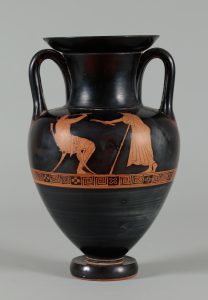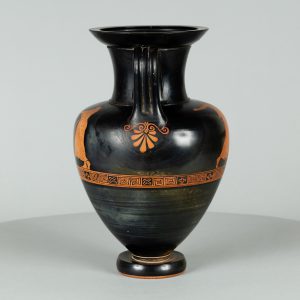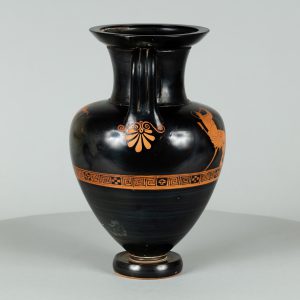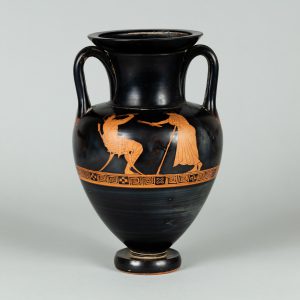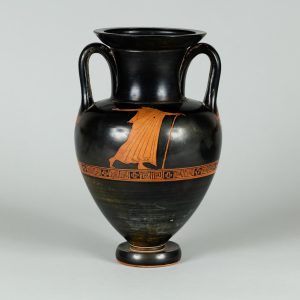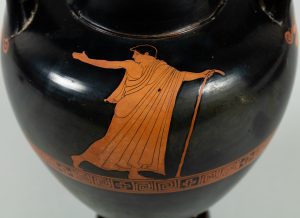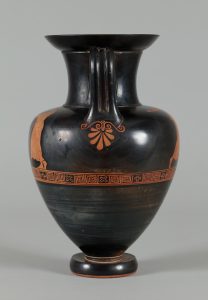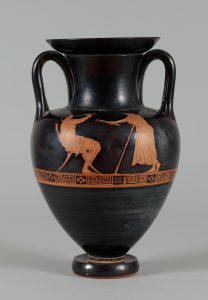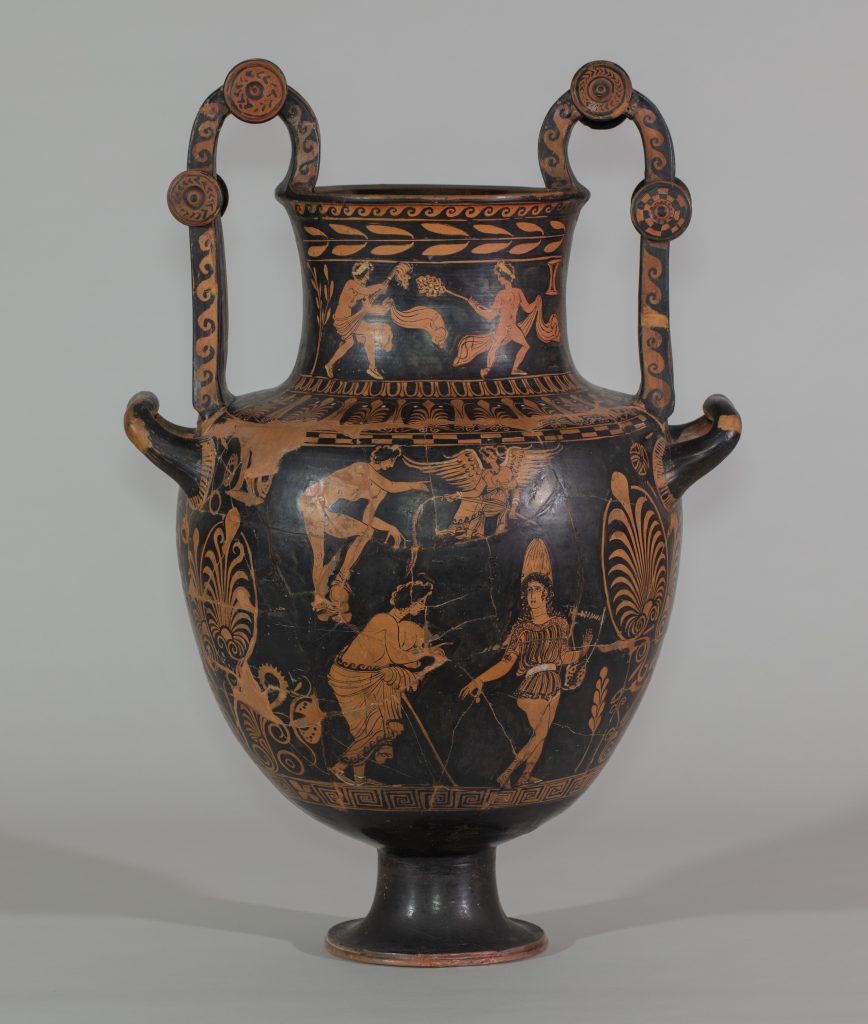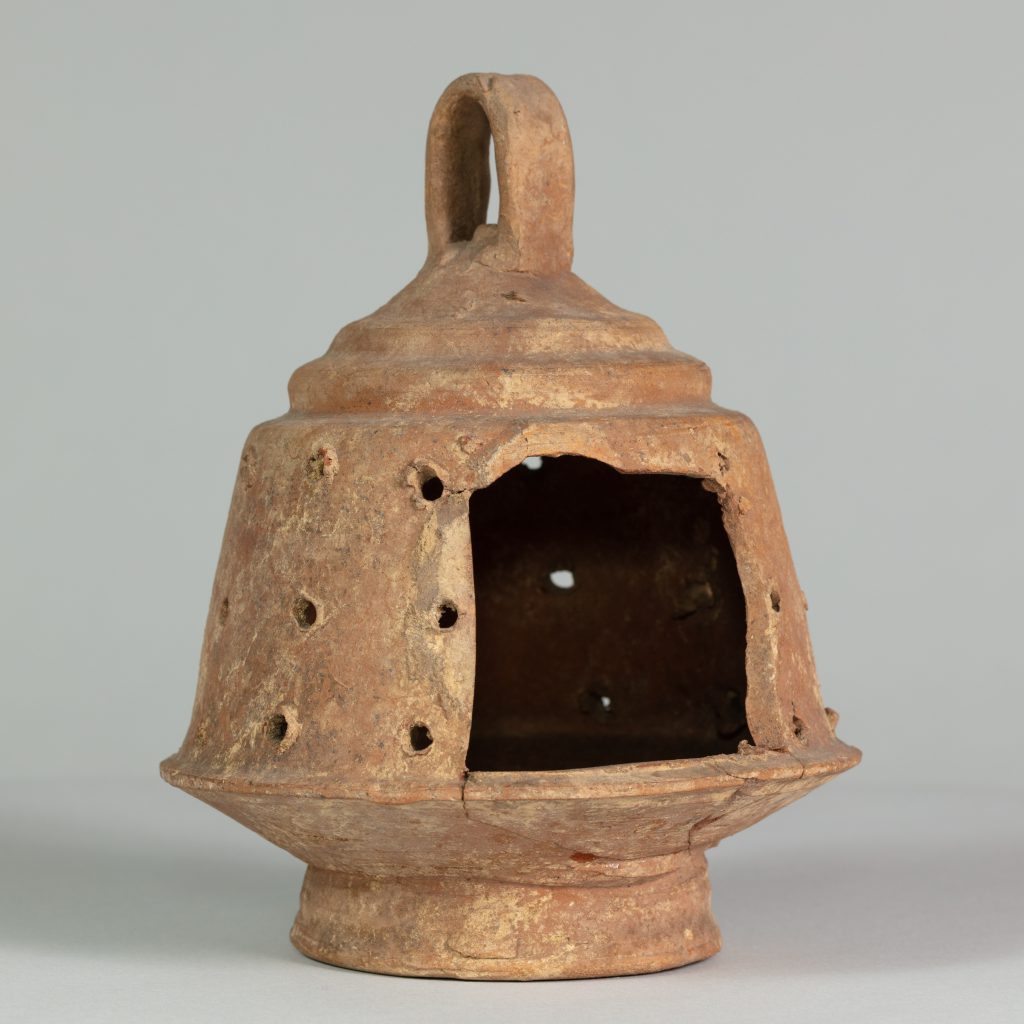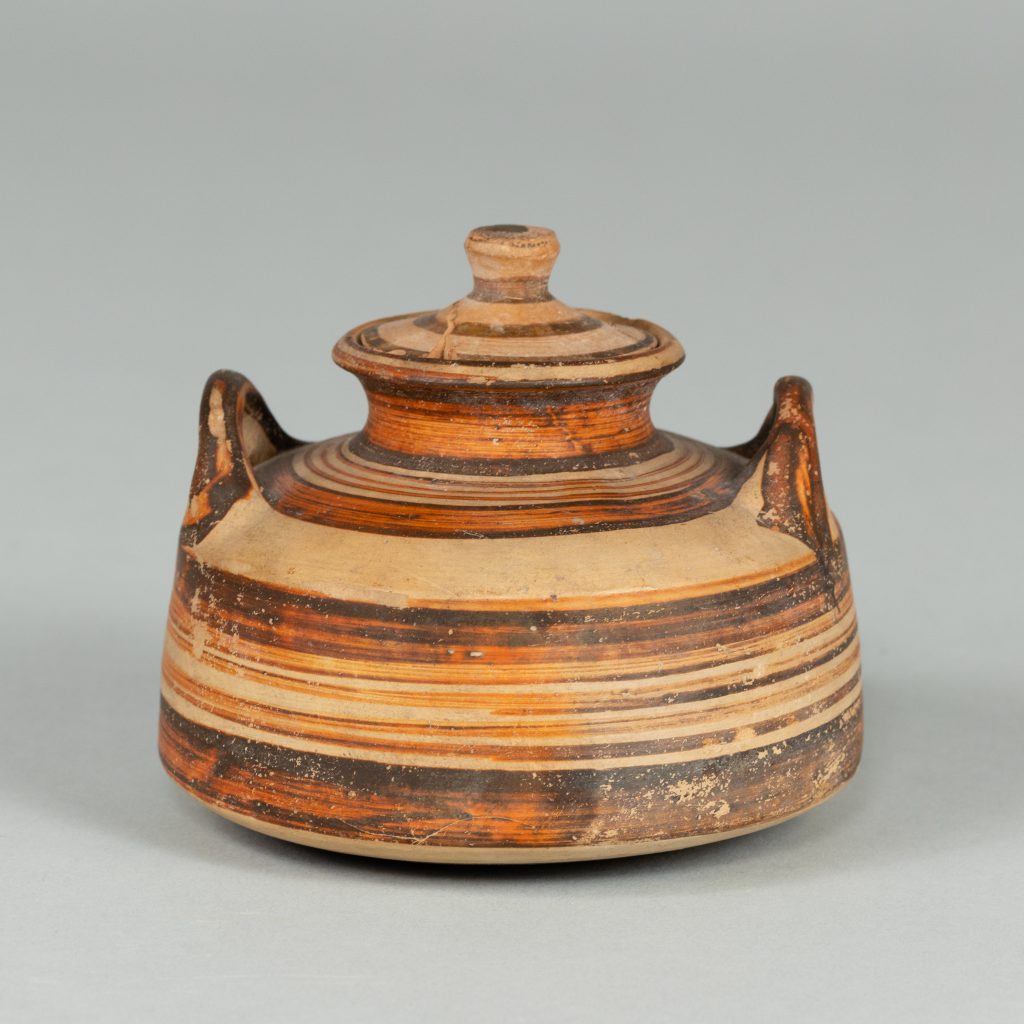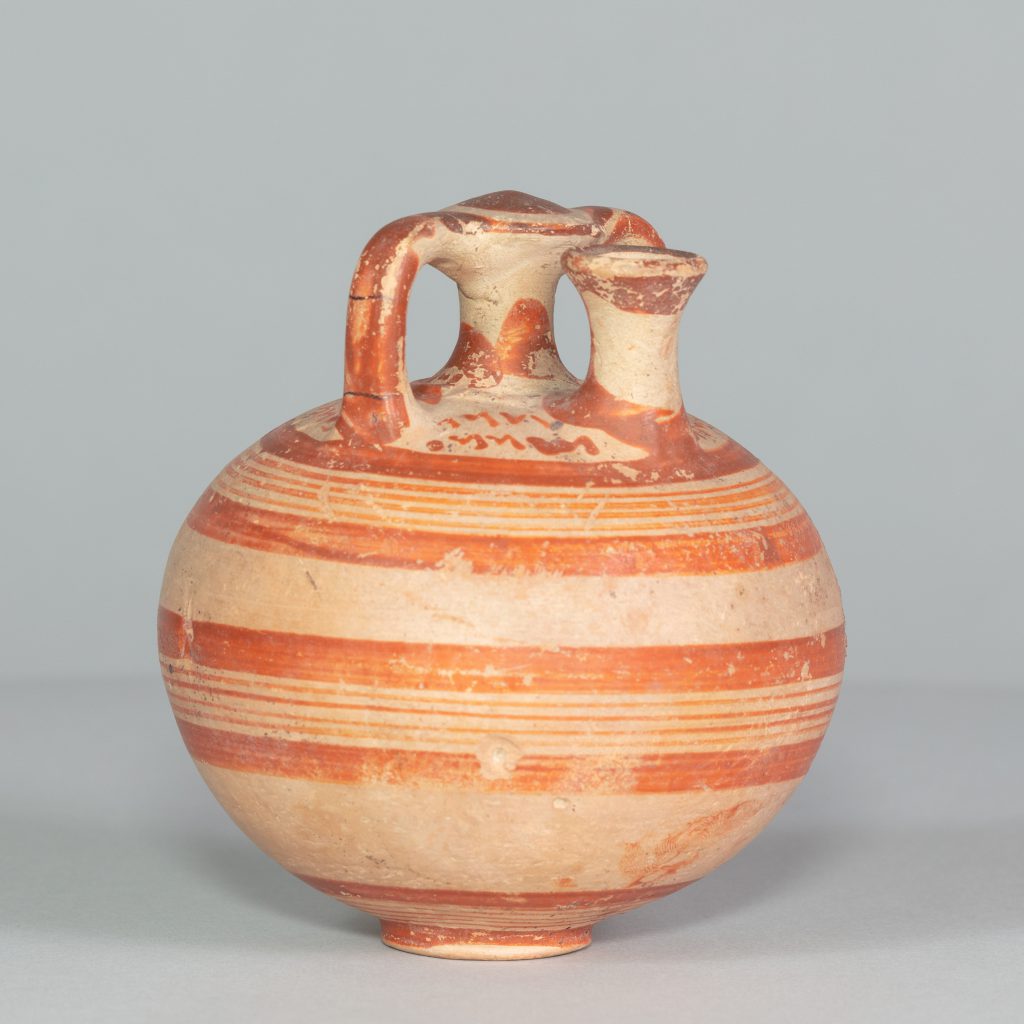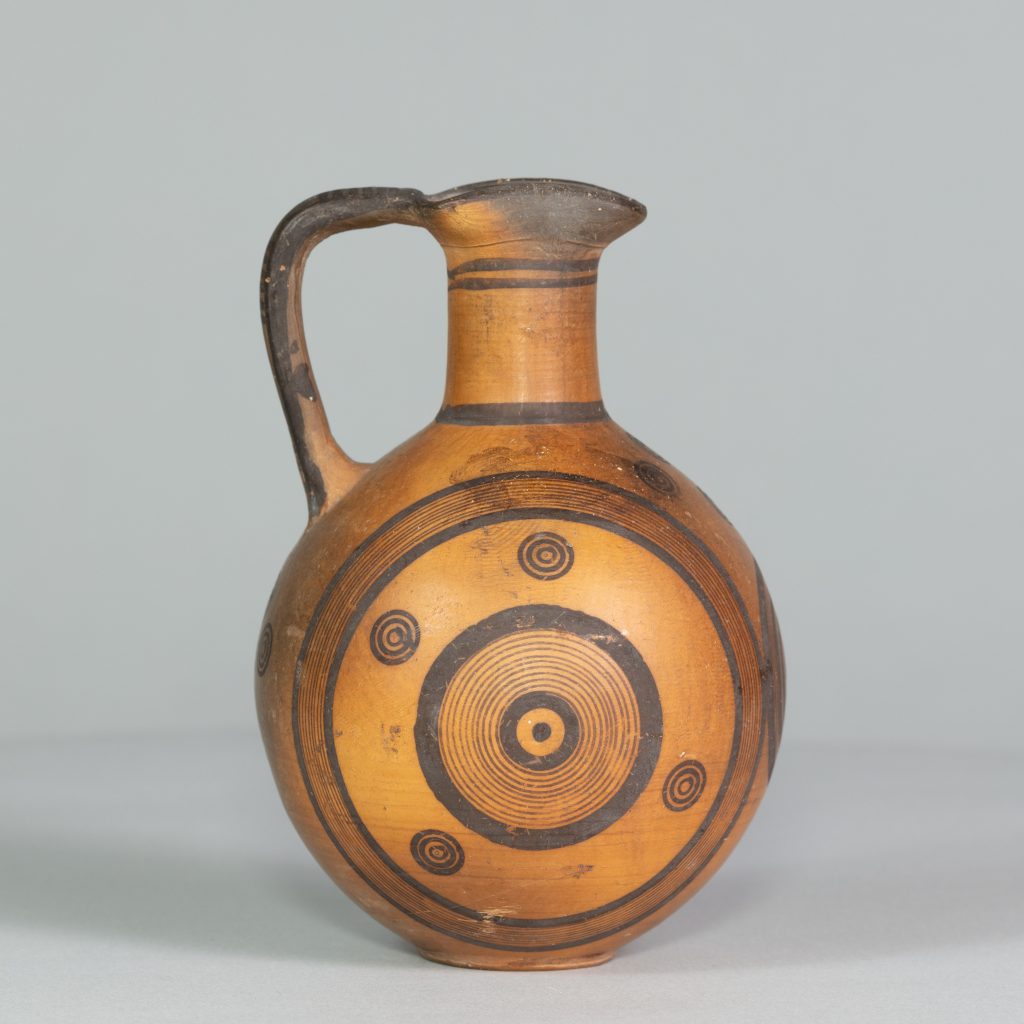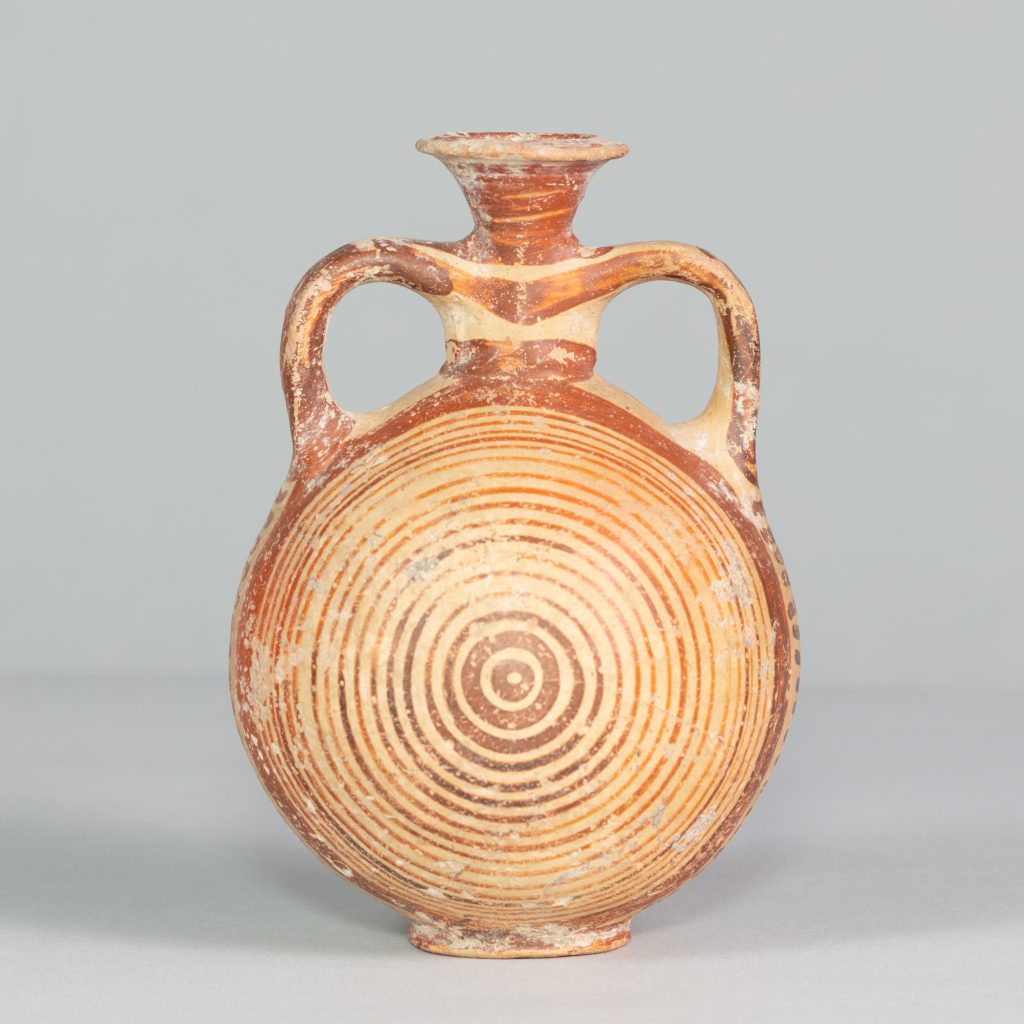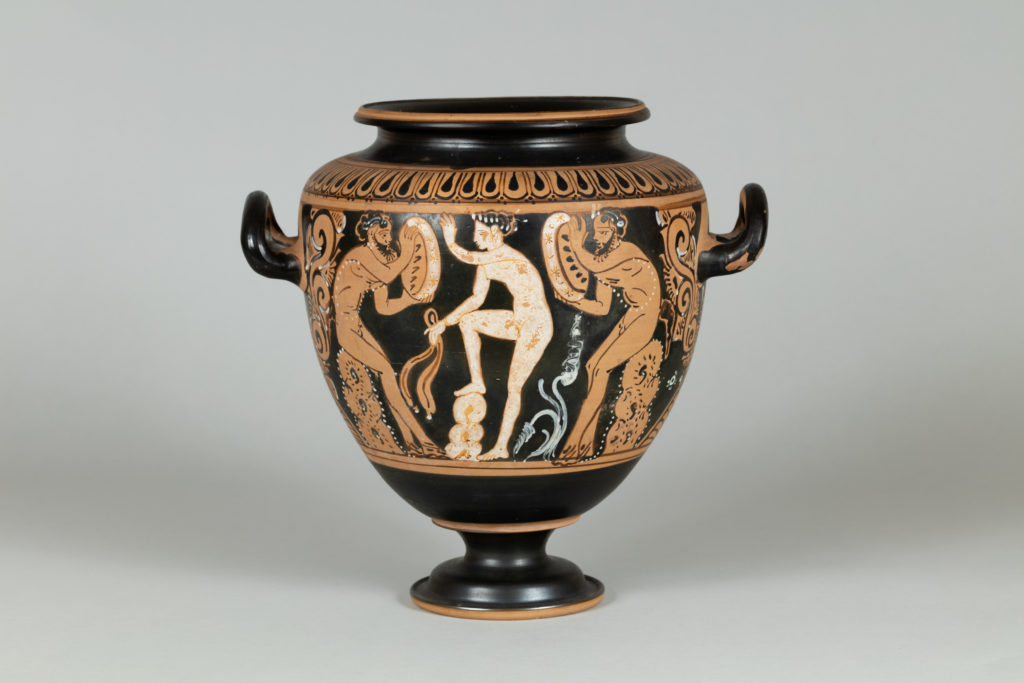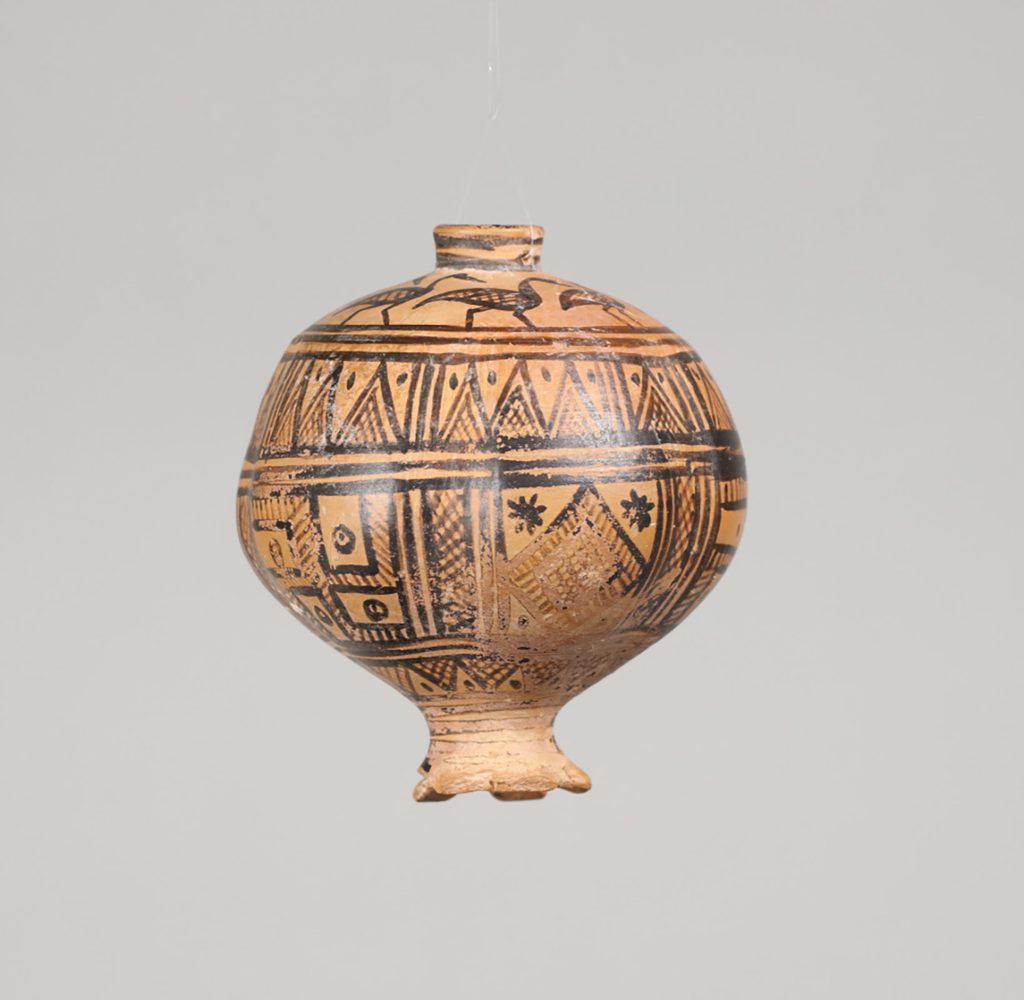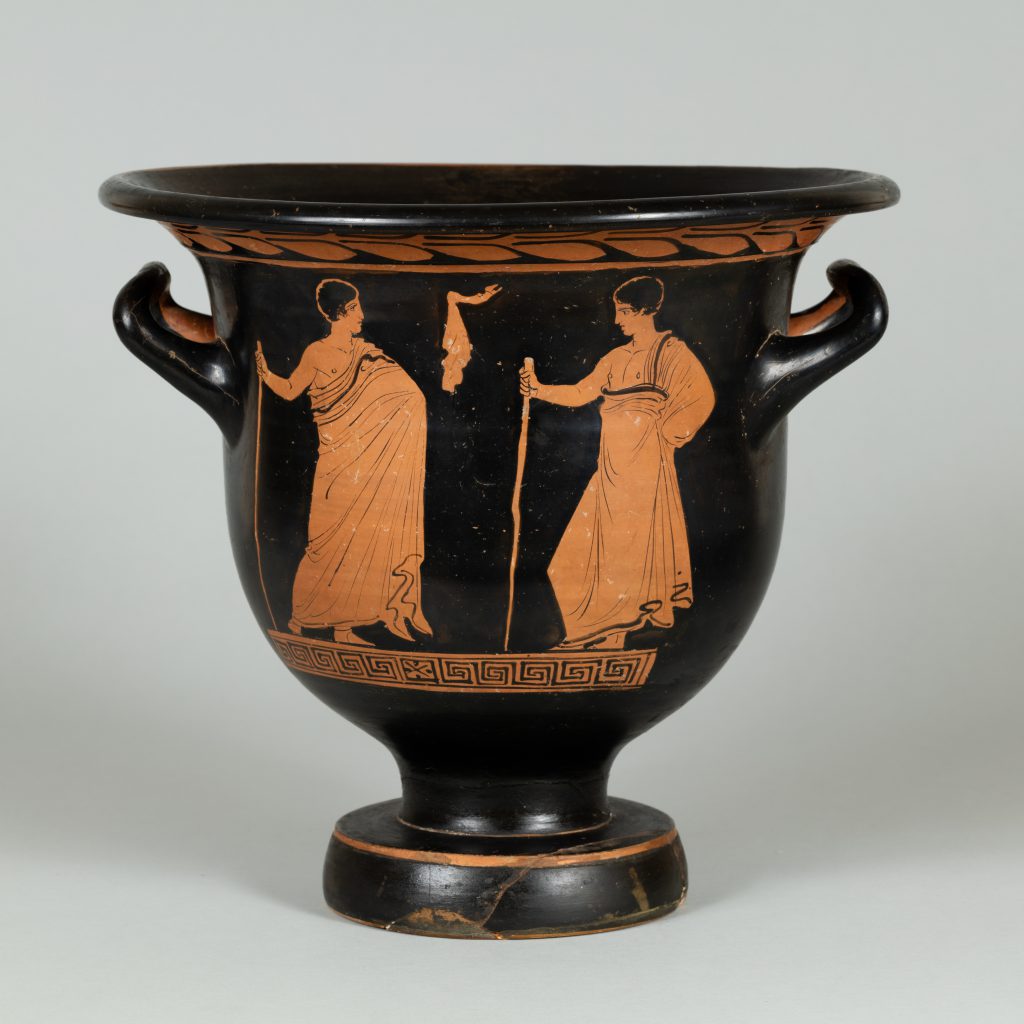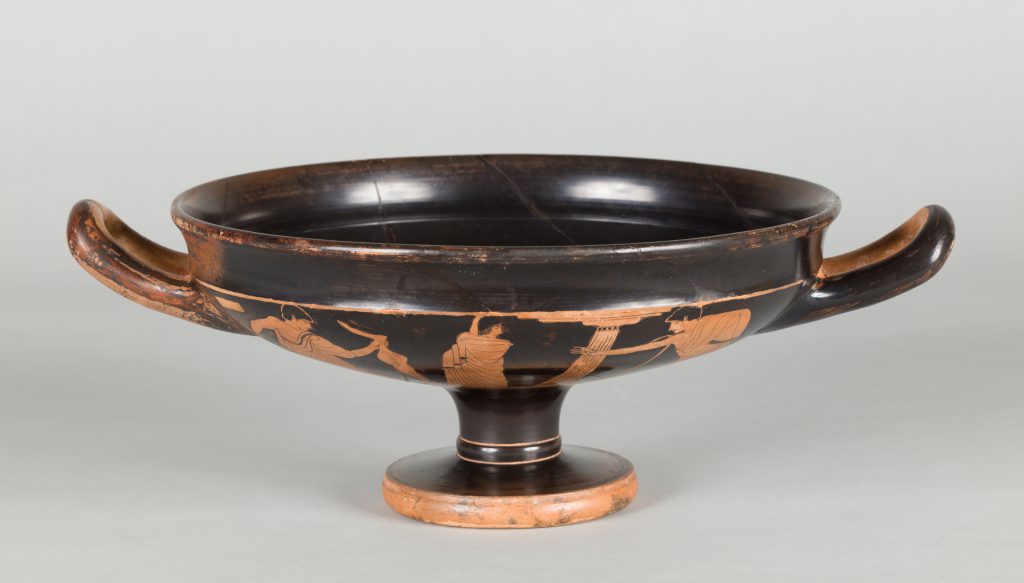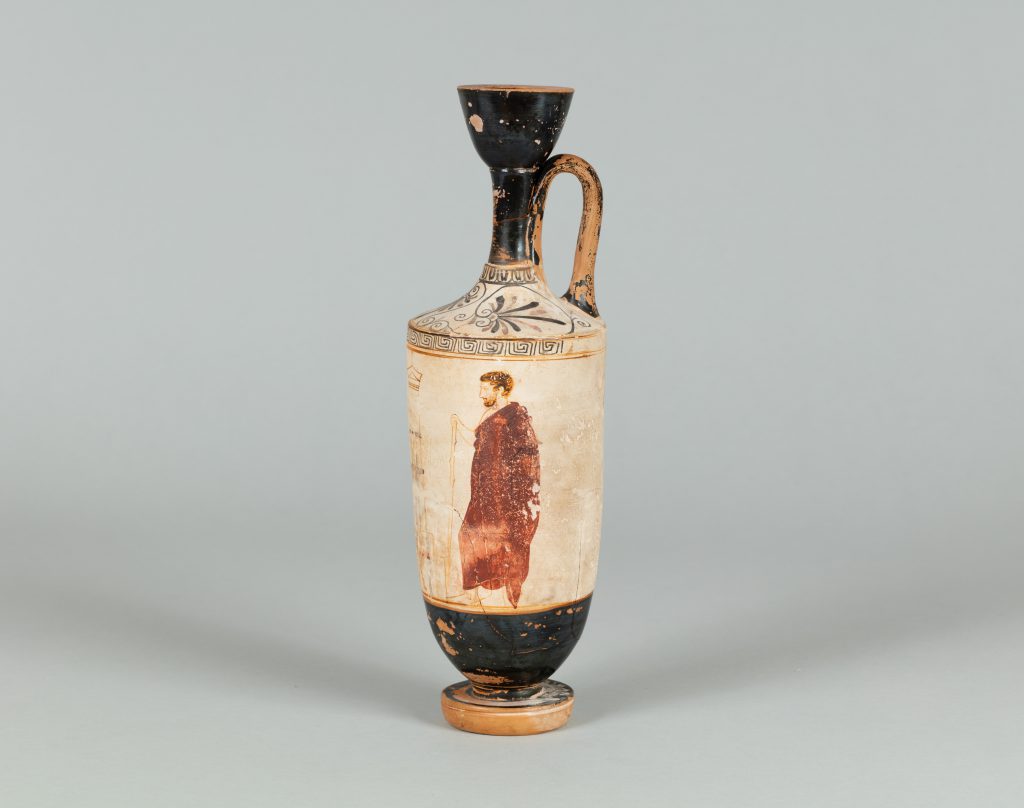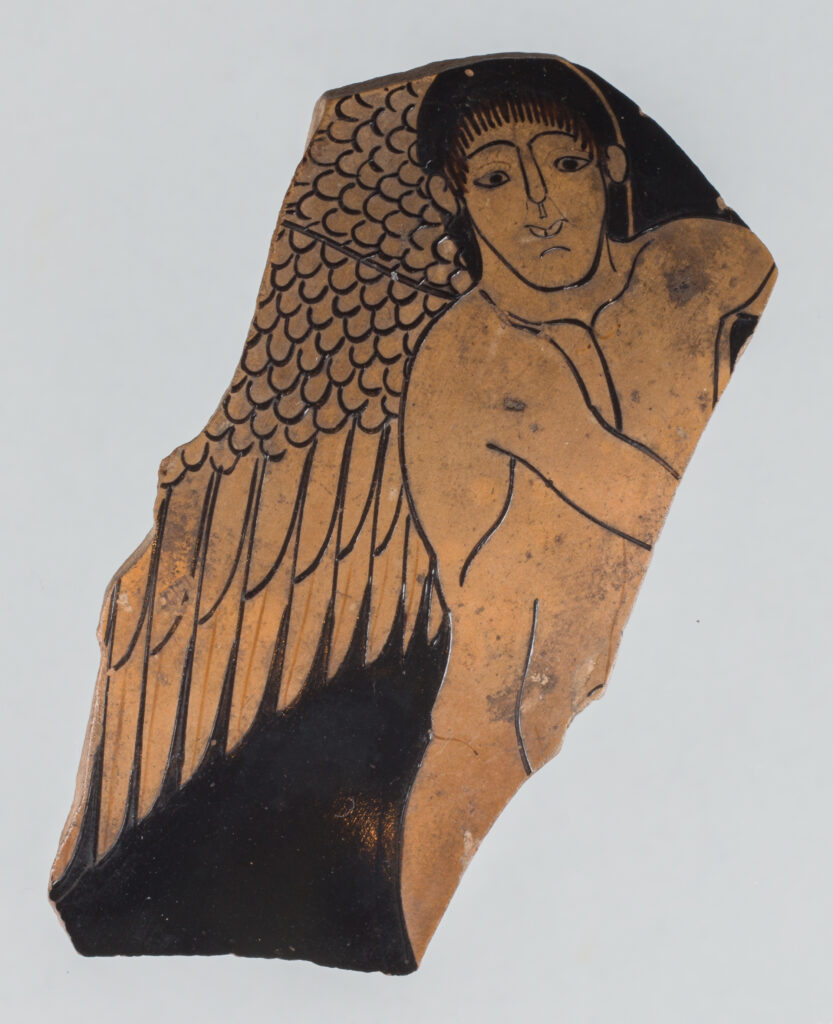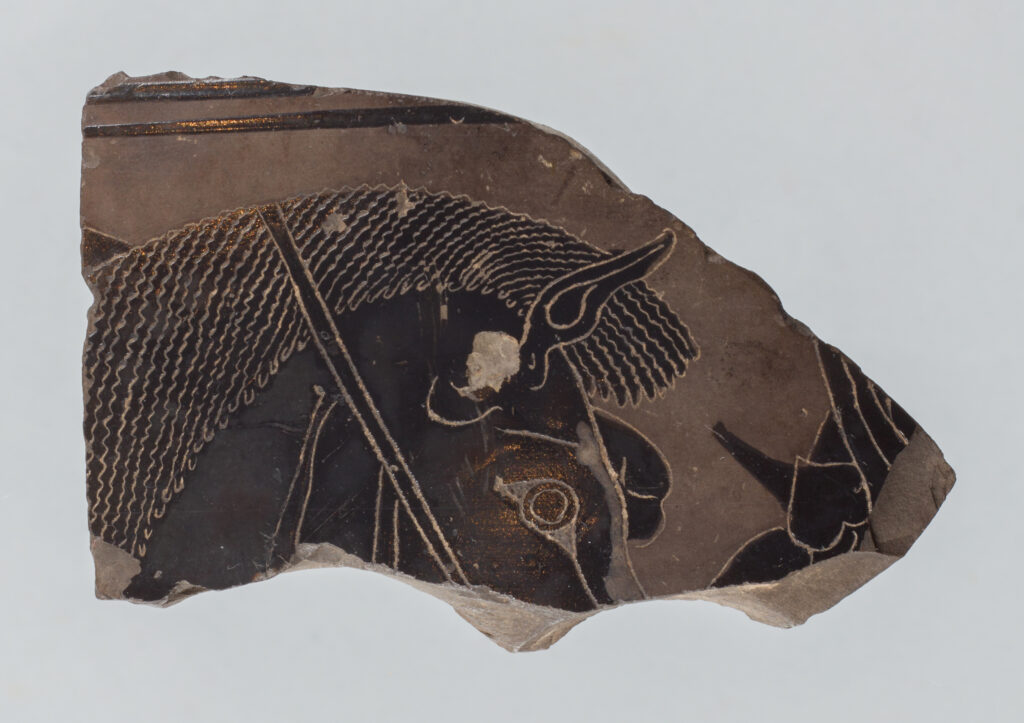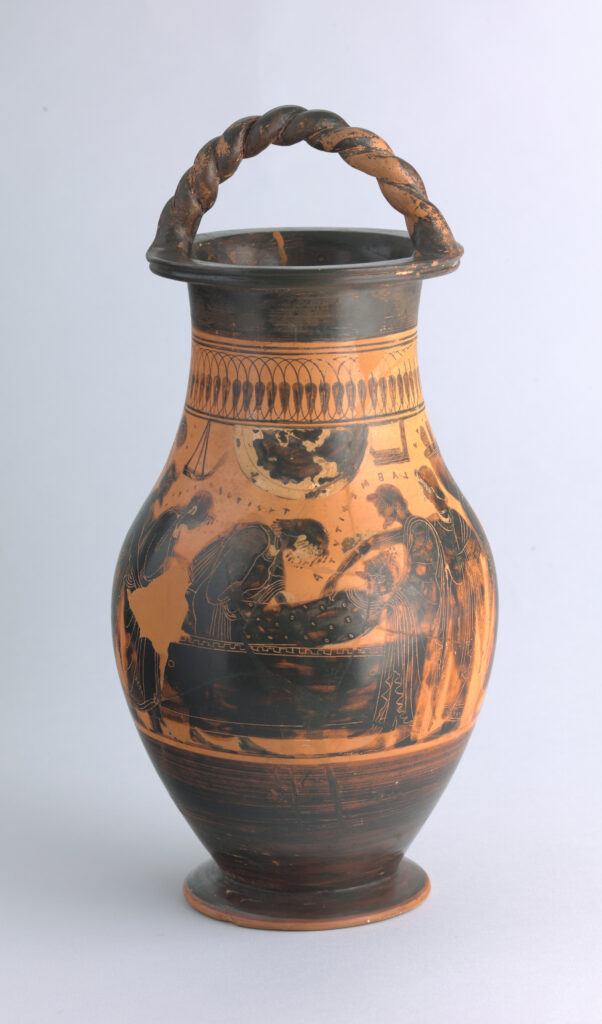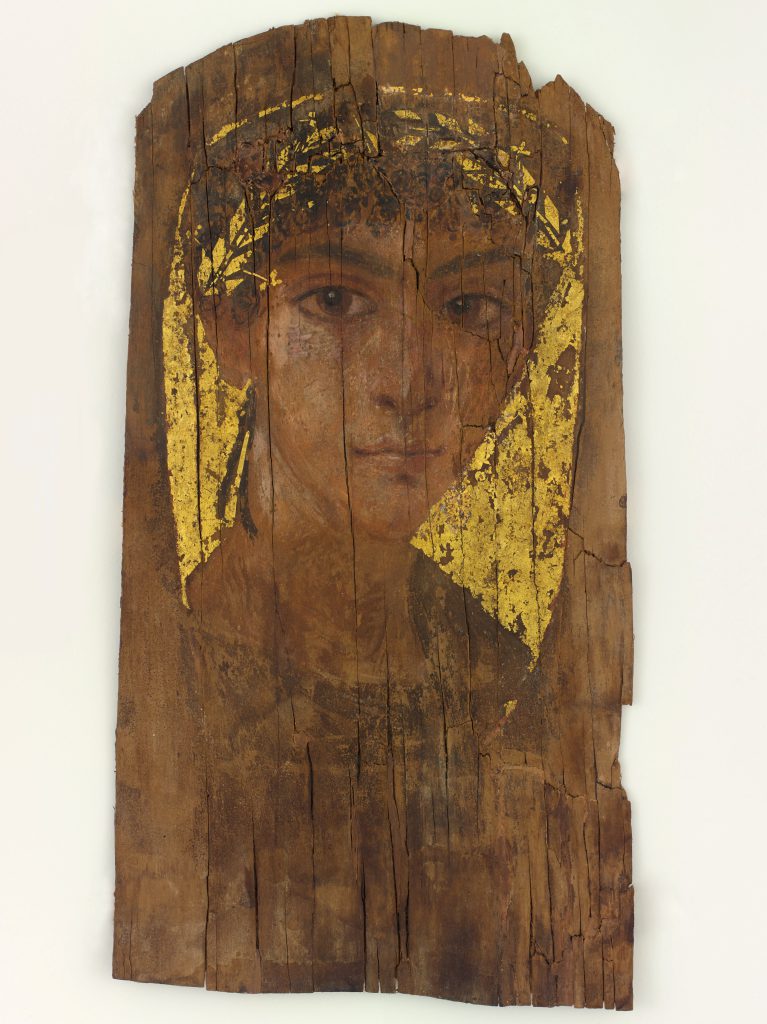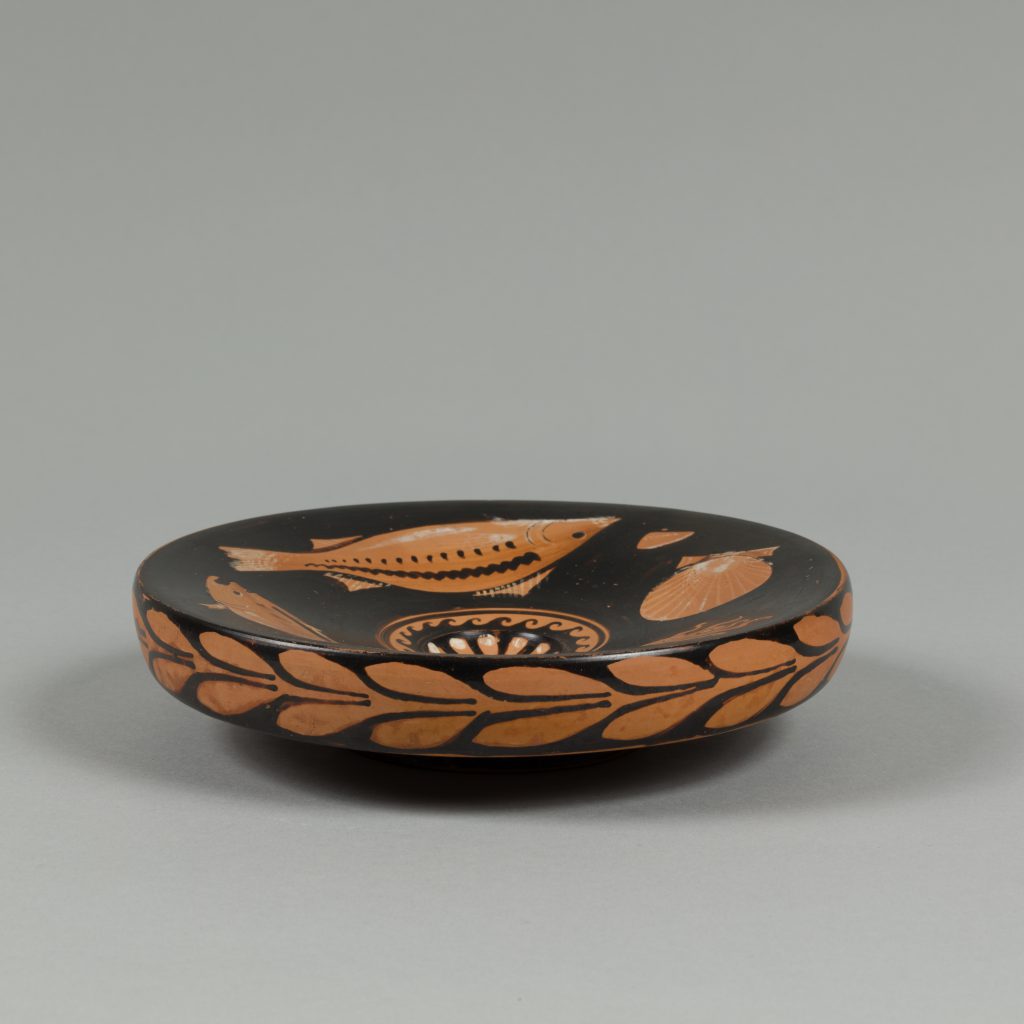
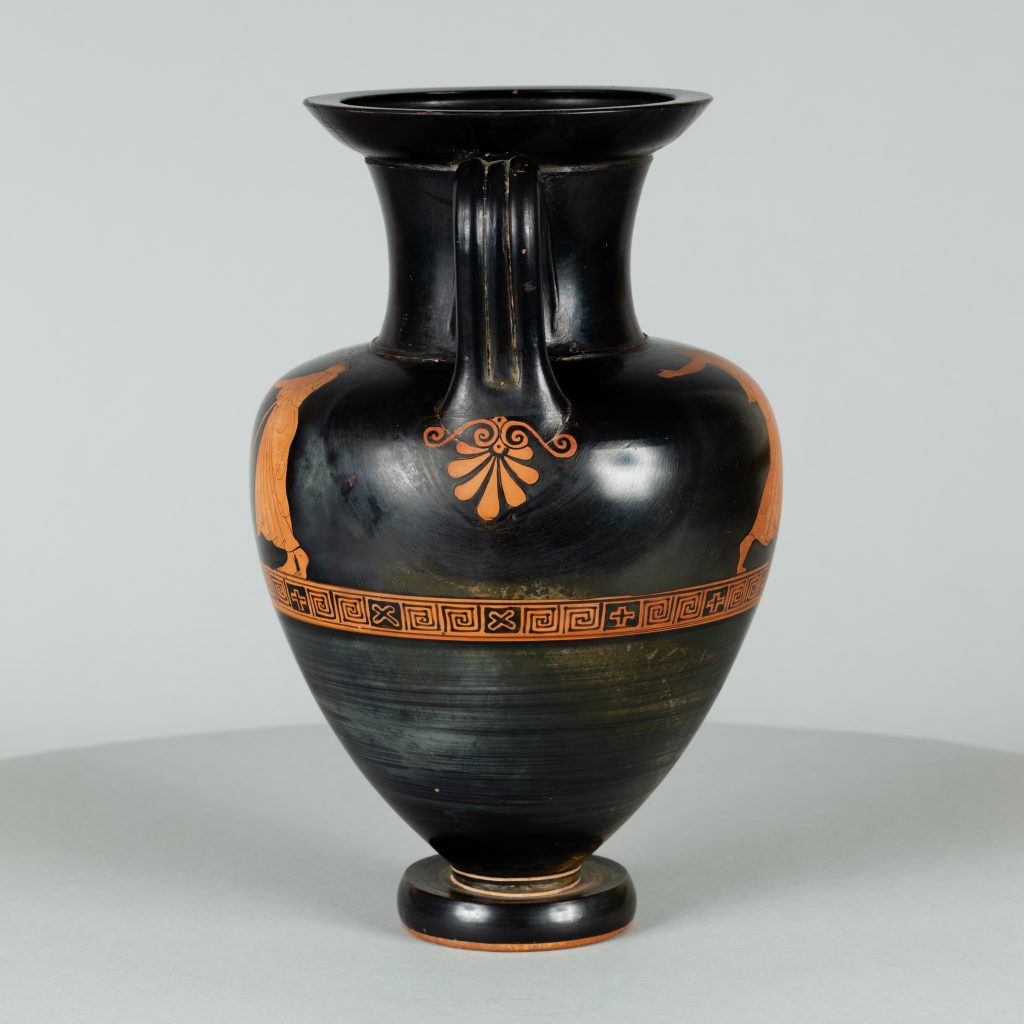
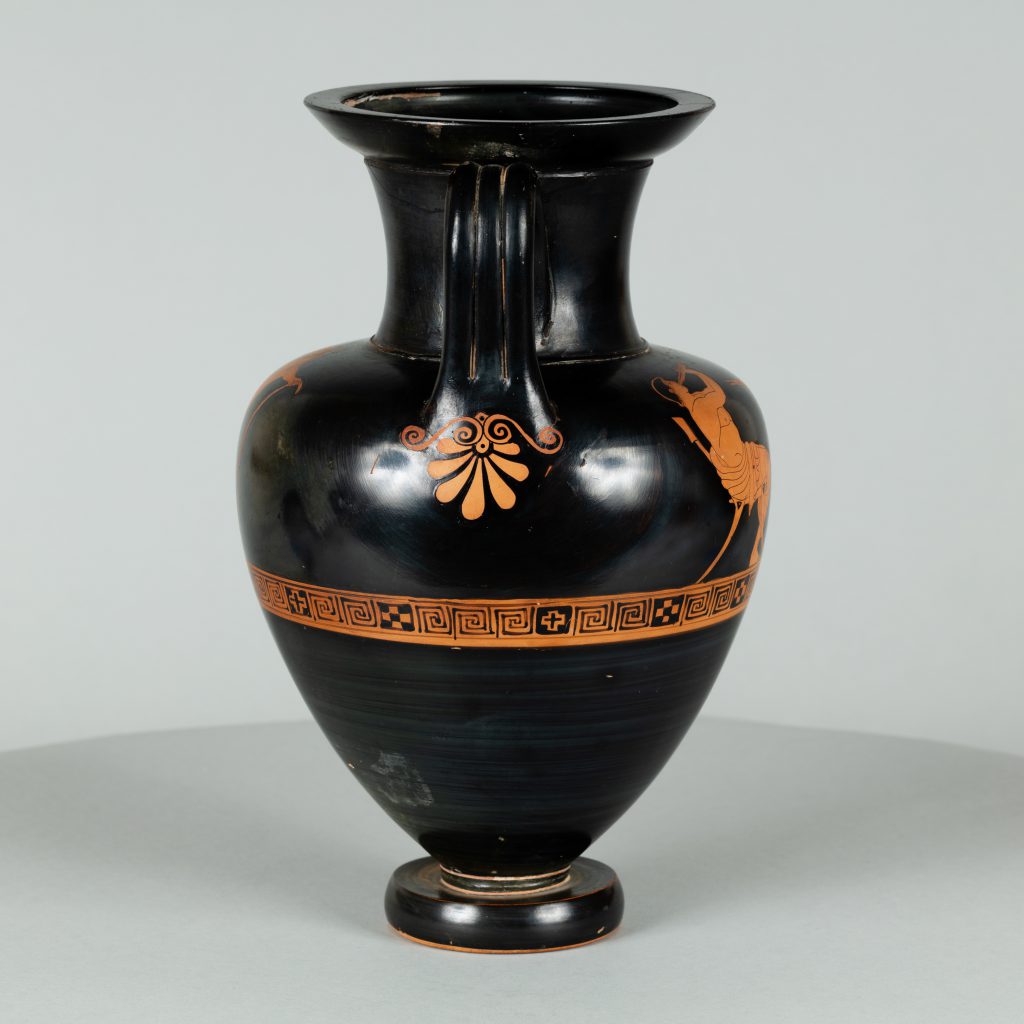



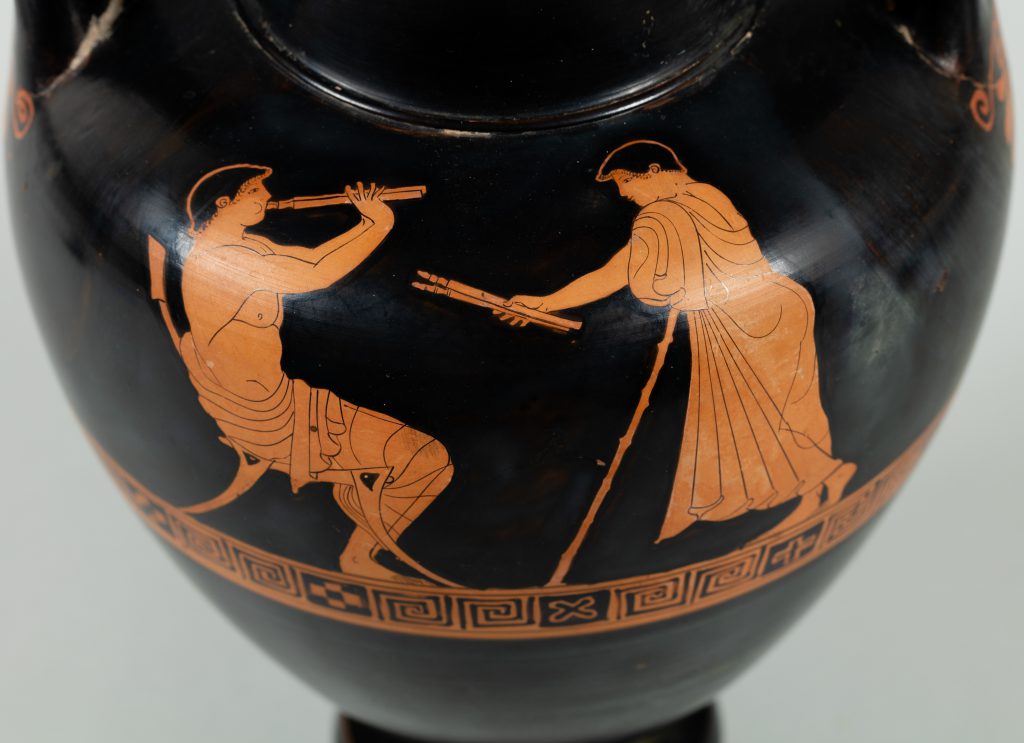
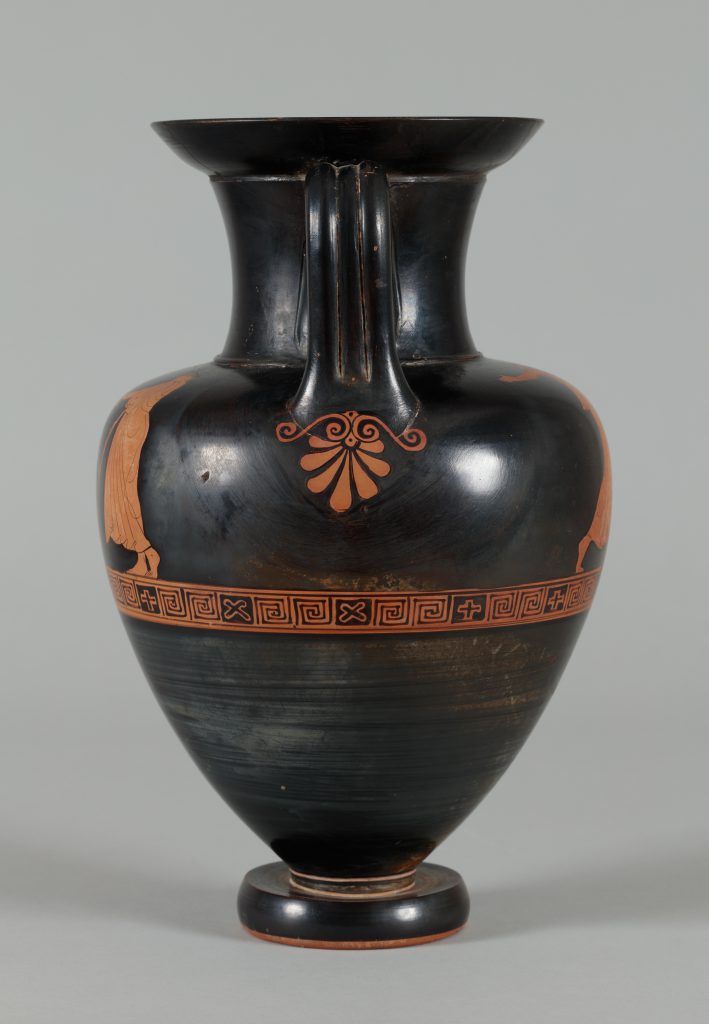

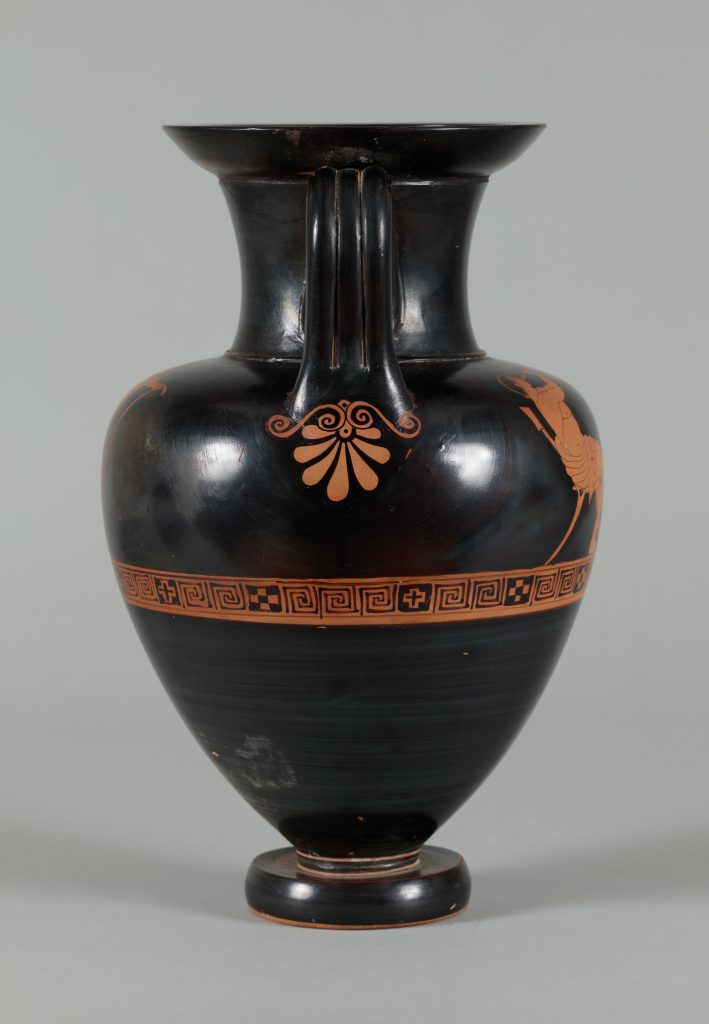
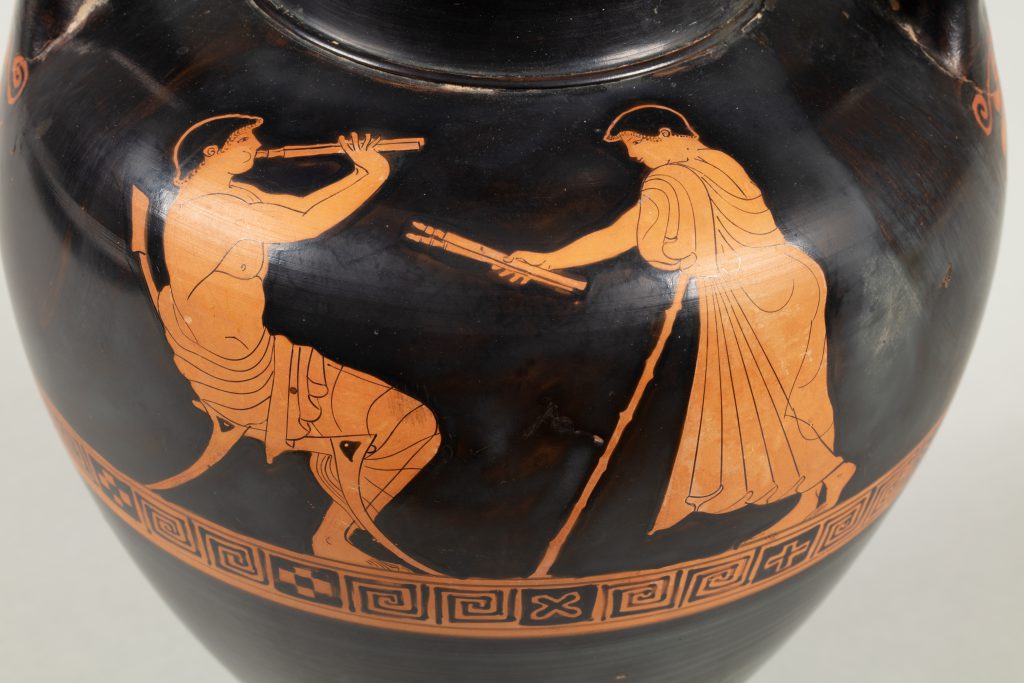
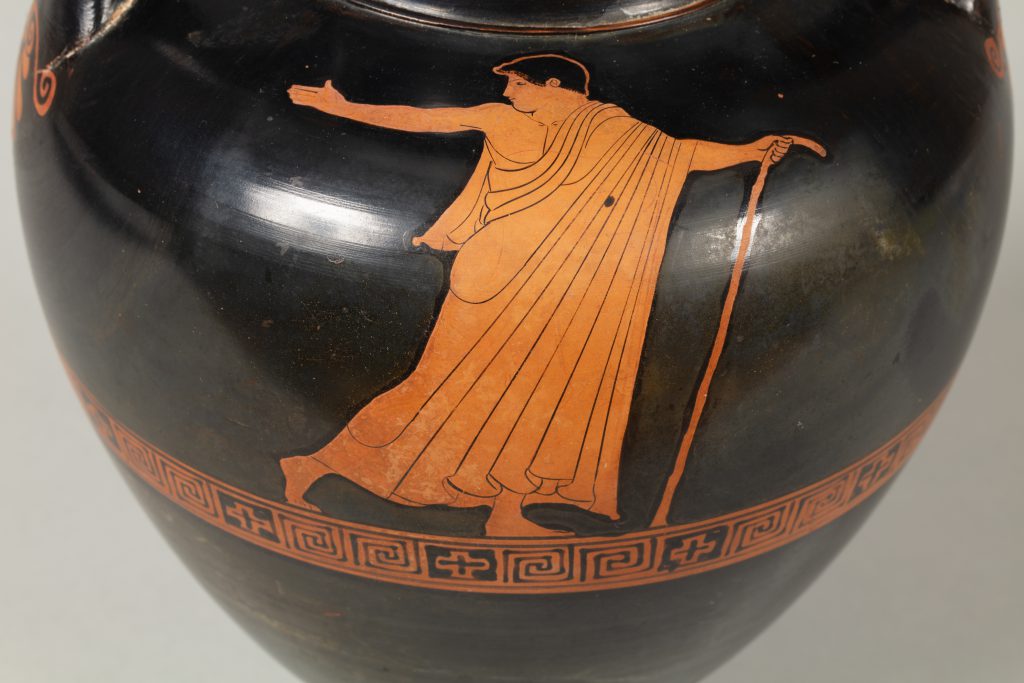
Gift of Edward Perry Warren, Esq., Honorary Degree 1926
1913.30The amphora, a vessel for storing and serving wine, was essential to the festivities of the Greek symposium. The symposium operated as a highly prescribed space and time for male citizens to gather in celebration of their shared identity. The depiction of a youth playing the flute on this example was representative of the role of music within both the banquet and the broader Greek culture of refinement that so greatly appealed to collector Edward Perry Warren.
Music and poetry would have enhanced the merriment of the symposium by contributing an auditory layer to the multi-sensorial experience. One of the more popular instruments was the flute, or aulos, and the Museum has one carved from ivory in the collection. The most typical form is constructed out of two reeds. This form is clearly visible on the front side of the amphora, as the seated youth holds the instrument outward with one reed in each hand, his puffed cheeks implying he is actively producing music. The figure across from him, likely his teacher, extends a second aulos. This iconography references the types of activities that would have occurred during the symposium and perhaps could even be interpreted as an invitation to the Greek men in attendance, encouraging them to play for one another.
Among the variety of forms and functions of vessels utilized for the Greek symposium, many are self-referential and include depictions of other vases, activities, or even the event itself. Given this emphasis on communally extolling Greek men, many vases often illustrate the male body and praise its aesthetic beauty. On one side of this amphora, a youthful man strides with his right foot in front as he twists with his right arm extended to the back, exuding a gracefulness in this balletic pose.
Imbibing wine was central to symposium activities and regarded as a god-given gift. As such, there were certain accompanying rituals and customs, the most vital being the mixing of wine, preserved in the amphora, with water stored in the hydria. The wine and water were combined in the krater (vase), the vessel that serves as the focal point of the event in both the physical and metaphorical senses. The mixture would then be poured from an oinochoe (a serving vase) into drinking cups such as the kylix, rhyton, and kantharos.
Warren’s partnership with the vase scholar John Beazley (1885–1970) impacted the reception of Warren’s donations and legacy as a collector. By identifying artists, Beazley established links between objects Warren donated or sold and antiquities held in other institutions. The Pan Painter is a prime example of this.
Before 1913, collection of Edward Perry Warren; 1913, gifted to the Bowdoin College Museum of Art by Edward Perry Warren.
Collector
A testament to his impact as an influential twentieth-century American antiquities collector, Edward Perry Warren’s (1860–1928, H ’26) name is linked to hundreds of ancient objects housed in institutions across the United States, including more than five hundred works at the Bowdoin College Museum of Art alone.
